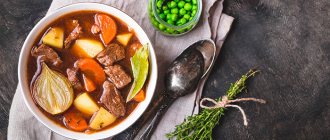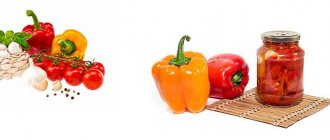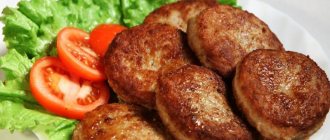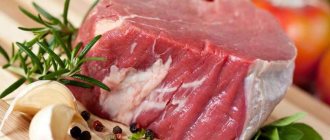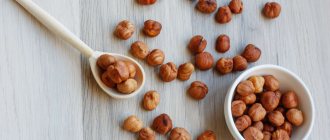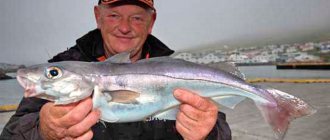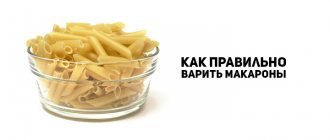- What they look like
- Taste
- What do you eat in crab?
- Benefits For women During pregnancy
- When breastfeeding
One of the most ancient animals living on the planet, crabs have long been familiar to people as an exquisite delicacy of sea cuisine. Of the more than seven thousand subspecies of these arthropods, several dozen have been identified that are used as human food and have commercial significance. In Russia, crab fishing is carried out in the Black Sea, Barents Sea, and the waters of the Pacific Ocean washing the coast of the Far East, Sakhalin, and Kamchatka. The main species caught include:
- Stone. A large marine crustacean with a shell covered with spines and growths.
Stone crab
The meat, tender and aromatic, is considered an exquisite delicacy. Lives in the Black Sea.
- Royal, or royal blue. A large species, adult males weigh 4.0 - 4.5 kg, females - 1.5 kg. Another Black Sea resident.
- Snow crab or snow crab. Lives in the cold waters of the Barents Sea.
- Kamchatsky. A large crab, reaching a weight of 8.0 kg for males, 5.0 kg for females. The length of the legs can reach 1.2 m - 1.4 m. It is mined along the entire Far Eastern coast of the Pacific Ocean. It occupies a leading place in the crustacean fishery.
Kamchatka crab
Edible crabs are famous for their meat. The phalanges of the legs and abdomen of the animal are eaten. In addition to its delicate aromatic taste, crab products have many beneficial properties.
Crab meat
Crab meat is a delicacy known for its amazing taste and delicate texture. Crabs can be freshwater and sea, and the meat of the latter is most valued, as it has a more pronounced taste and contains more useful elements:
- Taurine.
- Omega-3 and Omega-6 fatty acids.
- Vitamins: A, B1, B2, B3 (PP), B5, B6, B9, B12.
- Micro- and macroelements: potassium, sodium, magnesium, zinc, iodine, iron, phosphorus, selenium.
100 grams of product contains only 70-90 calories , 18 grams of protein and 2 grams of fat. There are almost no carbohydrates - less than 1 gram.
Crab meat is distinguished by the fact that it is easily digestible by the body (even several times better than chicken, beef and veal). This is due to the fact that crabs have a hard shell, due to which tissues and elements that are difficult to digest do not form in the tender meat.
Beneficial features
Arthropod meat contains a high concentration of beneficial active substances that make the body healthier and the person himself happier. The content of essential acids in crab is several times higher than that in fish and other seafood. These are: 80% moisture, 1.4% lipids, 19% protein, 2% ash, 2% glycogen.
Crabs are record holders for Sodium (Na) content.
Crab meat is considered a dietary product. Nutritionists advise including it in the diet of those losing weight and those who are watching their figure. But we should not forget about the dosage: meals consisting of seafood should not appear on the menu more than 3 times a week.
Due to the vitamin (taurine, tocopherol, ascorbic acid) and nutrient (polyunsaturated fatty acids, iodine, zinc, calcium) composition, the product is useful for anemia, deterioration of the organs of vision and cardiovascular pathologies.
What else is useful for crab meat:
- strengthens the heart muscle;
- reduces cholesterol levels in the blood and maintains its permanent indicator;
- protects the body from pathologies of the heart and blood vessels (serves as a kind of prevention);
- normalizes the level of thyroid hormones and improves the functionality of the endocrine system;
- promotes increased visual performance, combats the problem of dry eyes;
- improves the digestive system, “accelerates” metabolism and promotes better digestibility of foods;
- fights strong psycho-emotional stress, protects the nervous system from depression and anxiety;
- uplifts the mood and gives a feeling of peace;
- prevents premature aging of all body systems and skin;
- acts as an aphrodisiac and increases libido in both partners.
Composition and calorie content
The main components of crab meat are 6 g of protein, 1 g of fat and 10 g of carbohydrates per 100 grams of pure product. Its calorie content is only 73 kcal, which allows it to be used as food and as dietary meat.
The composition is supplemented by vitamins, mainly belonging to group B:
- nicotinic acid and niacin;
- riboflavin;
- folic acid;
- vitamin B12;
- thiamine;
- pyridoxine.
In addition, crab meat contains a lot of vitamin A, which is good for vision. The product also contains various minerals:
- macroelements - potassium, magnesium, phosphorus and calcium;
- microelements - selenium, zinc, etc.
Particularly useful is taurine, a sulfonic acid contained in crab meat, a product of the metabolization of the amino acid cysteine . It is a substance similar to amino acids, although it does not contain a carboxyl group; In the body, it primarily plays the role of a neurotransmitter, improving brain activity.
What do you eat in crab?
What do you eat in crab?
The edible parts of the crab are in the legs and abdomen. For ease of processing and transportation, crustaceans are cut at the place of catch. Most often, phalanges go on sale, which are grouped by length and location on the leg. Canned crab products and semi-finished products are also sold.
The remaining parts of the crab: head, internal organs, shell, are not suitable for food. They are separated at the cutting site and processed into products for agricultural needs. Considering that the crab is a scavenger and feeds on the waste of other marine life, it is consumed for food and further processing only in boiled form. Crab meat cannot be eaten raw.
What are crab sticks?
Crab sticks are made from surimi - fish fillet, minced to a paste, from which all bones, fat and unwanted parts have previously been removed. This paste is mixed with other ingredients before being heated and pressed into shapes that mimic crabmeat (1, 2, 3, 4).
Although crab cakes are made from seafood, they typically do not contain crab meat other than a tiny amount of crab extract that is sometimes added for flavoring.
Pollock fish, which has a mild color and odor, is commonly used to make surimi. This fish is also used to make fish sticks and other breaded fish products (1).
Packages of crab-like products may be labeled "imitation crab meat", "crab-flavored seafood" or "surimi seafood". In Japan, surimi is often called kamaboko (5).
Summary:
Crab sticks are made from surimi, which is fish meat ground into a paste - often pollack, pollock, hake and other fish. After creating a fish fillet paste, it is combined with other ingredients, heated and pressed into crabmeat.
Kamchatka crab
Kamchatka crab meat is the “sweetest”, it contains up to 3 g of glycogen per 100 g. Otherwise, its beneficial properties completely copy everything said for other crustaceans.
Kamchatka crabs are used not only for preparing canned food and frozen products. Their shells are a valuable source of chitosan.
Today there are many offers of dietary supplements with chitosan on the market; we are recommended to purchase them to “block fats.” Meanwhile, scientific research has proven the ineffectiveness of this approach. Chitosan from crabs or krill is not able to “block” branched lipid molecules in the human digestive tract. Therefore, “crab” tablets should not be considered an analogue of Xenical. Their consumers are destined to gain weight anyway if they overeat, despite the remedy.
Dietary supplements with chitosan are useful only as an additional source of fiber, and a good way to somewhat speed up the process of evacuation of the food bolus from the intestines. They are good for people who are deficient in plant fiber and for some reason are unable to replenish it in the usual way.
On the Internet you can also find folk recipes for replenishing iodine and vitamin A deficiency using Kamchatka crab shell. For those interested, the crabs are boiled, cleaned, their shells are crushed and used as a kind of “filler” for regular or olive oil. The product is then drunk, well, at least without pieces of shells. In fact, no research has been conducted on how much vitamin A remains in the oil or how much of it is contained in the product after cooking. Naturally, all this suggests the ineffectiveness of using such recipes.
Harm and contraindications
The harm of crab meat is that it may contain heavy metals and other dangerous toxins in high concentrations; Salts of radioactive elements are also found in the product. Of course, they will not lead to severe poisoning or radiation sickness, but it is still worth eating crabs in moderation.
Abuse of crabs can lead to a deficiency of various useful substances - it is easy to get enough of crab meat, and you will no longer want to eat other healthy foods . Therefore, it is important to control your diet, and along with seafood, be sure to include fresh vegetables and fruits and other dishes.
In general, crab meat is safe for the body if consumed wisely. The only contraindication is individual intolerance to the product.
Important! During pregnancy and during breastfeeding (lactation), crab meat can be consumed, but in very limited quantities, since it belongs to the group of allergenic products.
Calorie content per 100 grams
In Russia, the most commonly sold crab is Kamchatka crab, the bulk of which is caught off the western coast of Kamchatka. The calorie content of such a crab in its raw form is 7.2 calories, while steamed - 8.5 kcal. The Dungeness species is common in the USA. In this case, the calorie content of raw crab is 6.8 Kcal, steamed or boiled - 9.7.
The store often does not indicate what species the invertebrate is and in what water it was caught - sea or fresh. Therefore, for most people it is enough to know how many calories a boiled product contains - 118 Kcal. Energy value in grams - BZHU:
- protein - 1.97;
- carbohydrates - 0;
- fat - 0.44.
"Helpful information!" True crabs are invertebrates that are related to crayfish. The size of these animals depends on the species; in large specimens of the Kamchatka subspecies, the chest width can reach 60 cm and weight up to 7 kg.
How to choose the right one when buying
Crabs are sold live, frozen, boiled and canned. In the latter case, the product is divided into two grades: the highest (from whole large meat) and the first (there are small pieces).
It is best to buy crabs alive. But this purchase option will be successful for those who live in coastal areas where they fish. Keep in mind that fishing takes place from September to April. In the summer they are not sold alive. When purchasing, follow these guidelines:
- Choose active individuals; lethargic ones indicate the presence of a disease or have been stored for a long time.
- Pay attention to the appearance. If you want more meat, choose a medium-sized male. Large crabs may have tough meat. You can distinguish a female from a male by the size of her tail - hers will be larger and wider. Females may also contain caviar.
- The dark color of the belly indicates that the meat will be soft and tender.
If you buy frozen crab meat, look at the packaging. It should not contain a lot of ice and snow, this is a factor in re-freezing.
The production date and expiration date play a big role in the quality of the product. Meat is stored at a temperature of -18° – 1.5 years. When the rule is violated, there is no guarantee that the beneficial properties will be preserved; in addition, the taste deteriorates significantly.
When buying a frozen product, give preference to the claws and phalanges. After processing, they almost do not lose their taste and softness. Next, we will consider which parts of the crab should be frozen. Several parts are used: fist, phalanges, claws, knee and rose.
- The phalanges are distinguished by their large size and are rich in useful substances such as B vitamins and iodine.
- Fist - meat located in the middle of the claw. It has a dense consistency. Used for making soups and rolls.
- The shoulder of a crab's limb is called a rose. It is the least valued - it contains mainly bones.
- The knee is the smallest part of the limb and has an attractive red and white color.
Choosing and preparing correctly
To select a quality product, follow the guidelines below. A live crab must be large and healthy, have a strong, uniform shell without signs of disease. Lethargy indicates recent illness or prolonged “storage.” A large arthropod is also not the best choice, as it will be rough and tough.
Males are meatier and tastier than females (they differ from girls in their tail - relatively small and narrow). A frozen carcass should not have a lot of ice in the bag. Cut the carcass very carefully - tender meat is easy to damage. Its main part is located on the back, in the claws and legs. The taste is refined, the aroma is light and fishy.
Rolls, sushi, salads, and other dishes are made with crab meat. The optimal cooking method is steaming. You can also buy the delicacy in canned form - it costs no more than fresh and saves time on preparing dishes. Canned food makes delicious holiday salads, stuffed eggs, tartlets, pita bread, snack toasts, and first courses.
And further:
- crab sticks presented in supermarkets do not contain natural valuable substances;
- marine breeds are always healthier and tastier;
- the most tender fillet is in the paws and claws;
- You can freeze the product, but in compliance with the technology;
- canned delicacy is a conditionally dietary product.
Recommendations for use
Crab meat is consumed after heat treatment: boiling, baking or frying. Raw crabs are stored at low temperatures in the refrigerator.
This food should not be consumed more than 2-3 times a week. The optimal size of a single serving is 80-100 g.
Use in cooking
In cooking, the product is prepared in various ways: it is baked, frozen, canned, boiled.
There is a simple way to prepare crab meat for lunch and dinner:
- You need to separate the meat from the shell.
The resulting product is boiled in lightly salted water for 5-10 minutes.
Boil rice and chicken eggs in a separate bowl.
When all the ingredients are ready, they are placed in a common container. The eggs are peeled and cut into slices, placed on top of rice and meat.
Add two slices of lemon to improve the taste.
Cutlets are prepared from crab meat according to the instructions:
- 200 g crab meat cut into small pieces;
to the resulting mass add 1 chopped onion, 2 finely chopped boiled eggs, 100 g of grated cheese and 2 cloves of garlic;
all ingredients are thoroughly mixed until smooth;
then add one raw egg to the mixture, form balls (which will become cutlets);
they are rolled in breadcrumbs and shaped into cutlets;
fry every 20 minutes;
In this video, learn the recipe for cooking a dish with crab meat from the chef:
Is it used for weight loss, is it contraindicated during a diet?
Can be used during a diet because it contains few calories - only 73 kcal per 100 g. Crab meat contains a lot of protein, which gives satiety and is necessary for the body.
Thanks to it, metabolism is normalized, performance increases, and the diet is easier to tolerate.
During weight loss, this meat is not contraindicated.
If there is no excessive sensitivity or tendency to allergies, it can be included in the menu.
But it should not be consumed in large quantities or made the main dish. It is added to side dishes in quantities of 50-80 g to prevent overeating and poisoning. It is better to eat it every other day.
To treat diseases
It is not the crab meat that is used to treat diseases, but the shell. The substance chitosan is extracted from it, which becomes a component of healing ointments and gels, restores skin health, prevents diseases of the digestive system, and removes toxins.
There are no folk remedies with this product.
In cosmetology
In cosmetology, this component is used as an anti-aging agent. It will help maintain skin firmness and elasticity. But to avoid allergies, use the product in minimal quantities.
Boiled meat, crushed to a pulp, is mixed with egg white and placed on the face for 15 minutes, rinsed off.
This simple recipe helps fill the skin with vitamins, improve complexion, and prevent the appearance of wrinkles. Apply the mask 1-2 times a week.
Another face mask is also suitable for preserving youth: mix boiled meat with 2-3 tablespoons of olive or flaxseed oil.
The mixture is applied to the face for 15 minutes, then washed off. The product is used twice a week.
This is a real delicacy that will decorate the table and your guests will love it. It is included in various dishes, obtaining excellent results.
Use of the ingredient in cooking
Recipe for ravioli with crab and apples
We will need:
- drinking yogurt (milk-based without flavors and sweeteners) – 150 ml;
- Greek yogurt – 10 ml;
- gelatin – 1 sachet/piece;
- crab meat – 50 g;
- green apples (with a sour taste) – 40 g;
- avocado (choose ripe dark green fruit) – 1 piece;
- cream (any fat content) – 10 ml;
- cilantro (can be replaced with your favorite herbs) – 5 g;
- lemon or lime juice – 3 ml.
Preparation
Prepare gelatin according to the instructions on the package (depending on the specifics of the gelatin). Mix the prepared gelatin with drinking yoghurt, mix the ingredients until you get a homogeneous liquid mass. Prepare a baking sheet: line it with parchment paper and spread the gelatin-yogurt mixture evenly over it. Place the baking sheet in a dry, dark place until the mixture hardens. As soon as the gelatin has set and the yogurt has hardened, cut out circles from the frozen plate. The size of the circle depends on the desired size of the ravioli.
Grind half the avocado in a blender, then pour in the cream. Place the resulting mousse in the refrigerator. Grind the other half of the avocado and mix with chopped crab meat, herbs and apples. Season the apple-meat salad with lemon/lime juice and Greek yogurt.
Place the finished filling inside circles of yogurt and gelatin and form ravioli. Serve with avocado mousse immediately after cooking.
Recipe for California rolls with crab meat
Culinary fact: “California” was invented by the Japanese Ichiro Masita specifically for the American people. But the dish became international and, as fate would have it, became especially popular among the Slavs.
We will need:
- rice (recommended to use nishiki) – 150 g;
- vinegar for making sushi and rolls – 2 tablespoons;
- crab meat – 200 g;
- avocado (choose a fruit with a dense structure) – 100 g;
- Japanese mayonnaise – 40 ml;
- tobiko (caviar) – 100 g;
- nori (dried seaweed) – 5 pcs;
- wasabi and pickled ginger to taste.
Preparation
Rinse the nishiki rice in cold water. Rinse until the water is crystal clear. There is no need to grind the rice or intensively peel each grain of rice. It is important that the grains are not broken or damaged. Rice is the main ingredient of the rolls, so it must be cooked perfectly. Gently stir the rice under running water, then transfer to a sieve, place inside a large saucepan and allow any excess liquid to drain. Rice needs 15-20 minutes to get rid of moisture and dry completely.
Boil the rice in a special rice cooker or follow the instructions on the package. Once the rice is cooked, leave it in the covered container for another 15-20 minutes. During this time, the cereal will cool, become denser and easily take the desired shape. Add the roll vinegar to the warm rice and knead until the liquid is completely absorbed. Lightly dampen the towel, cover the pan with rice and let sit for another 20 minutes.
Boil the crab for 20 minutes in filtered water without salt and spices, then cool. Remove the meat from the second phalanx (this is where it is the most delicious and juicy) and finely chop. Peel the avocado and cut into narrow slices.
Form a roll in the following sequence: nori sheet, rice, avocado, Japanese mayonnaise, crab meat. Roll up and dip tobiko in caviar. Carefully cut off the edges of the roll and cut it into several portions. Place the dish on a plate and serve with ginger, wasabi and soy sauce immediately after cooking.
What is crab meat
The natural product is extracted from the abdomen, claws and limbs of the crab and is a delicacy, easily absorbed by the body and has great health benefits.
It is important to distinguish meat from surimi sticks, which consist of finely chopped and pressed fish or even soy. They do not have any special beneficial properties, and additives of unnatural origin can even harm the body.
Crab meat is obtained from sea and freshwater crabs. Marine species are more tasty, contain more nutrients and are of greater benefit to humans.
Harm
When consumed in moderation, crab meat will not cause any harm to the body. But it should not be eaten by those who are allergic to seafood.
Since crabs are bottom-dwelling creatures, they can be contaminated with harmful bacteria or even contain radioactive elements in the meat. In this case, crab meat is dangerous to human health.
The product may also be harmful if the crab was caught in polluted water - after all, various waste and liquid processed products are often dumped into the seas. Therefore, you need to ask sellers for a certificate or some other document that states where the crab was caught and whether it is healthy.

